The Bitcoin network crunches 700 quintillion calculations every 10 minutes to mine one block. This surpasses Google’s yearly computational work. It’s a massive undertaking that shapes the mining landscape.
As a Bitcoin miner, I often field questions about mining duration. Unlike gold mining, Bitcoin mining isn’t about individual effort. It’s a complex process involving computational power, network difficulty, and chance.
Bitcoin mining pits you against millions of specialized machines worldwide. It’s not a race to find coins. Instead, it’s a competition of computational might and efficiency.
This guide offers real-world insights into mining timeframes. We’ll delve into technical aspects, current stats, and practical considerations. You’ll gain valuable knowledge, whether you’re new or looking to optimize your setup.
Key Takeaways
- Bitcoin mining involves solving complex mathematical puzzles every 10 minutes on average
- Individual miners rarely mine complete bitcoins due to network competition
- Mining pools allow miners to share rewards and receive consistent payouts
- Hash rate and network difficulty directly impact mining timeframes
- Modern mining requires specialized ASIC hardware for profitability
- Electricity costs and hardware efficiency determine mining success
Understanding Bitcoin Mining
Bitcoin mining isn’t about digging for digital gold. It’s a complex computational process that keeps the cryptocurrency network running smoothly. Powerful computers solve math problems to make this happen.
These machines work non-stop, competing in a global digital race. They’re not extracting resources like traditional mining. Instead, they’re processing data to keep Bitcoin functioning.
What is Bitcoin Mining?
Bitcoin mining is the backbone of the entire network. Miners are essentially digital accountants who verify and record every transaction on the blockchain. They bundle pending transactions and solve cryptographic puzzles.
It’s like a huge lottery where tickets are generated every second. The first miner to find the winning combination gets new Bitcoin. This happens about every 10 minutes, creating new blockchain blocks.
No single authority controls Bitcoin mining. Thousands of miners worldwide contribute computing power to maintain network security and process transactions.
How Does Bitcoin Mining Work?
Miners collect unconfirmed transactions and organize them into a block. They add a random number called a “nonce”. The goal is to find a hash that starts with a specific number of zeros.
Miners use a cryptographic hash function called SHA-256. This function produces a unique 64-character string for every input. The challenge is finding an input with the required number of zeros.
The system adjusts mining difficulty every 2,016 blocks, about every two weeks. This keeps new blocks being found every 10 minutes, regardless of total computing power.
The first miner to solve the puzzle broadcasts their solution. Other miners verify it, and if correct, the new block joins the blockchain. The successful miner receives the block reward plus transaction fees.
This competitive process creates a self-regulating system. More participants mean higher security but also increased difficulty. This balance has kept Bitcoin running smoothly since 2009.
The Mining Process Explained
The real challenge is setting up the right mining equipment and following proper procedures. Success depends on two key factors: choosing the right gear and understanding the mining process. These elements turn electricity into potential Bitcoin rewards.
The mining process is systematic when broken down into manageable steps. It’s not as complex as it may seem at first glance.
Mining Equipment Needed
Your choice of mining hardware is crucial for your operation’s success. Regular computers and graphics cards are no longer viable for Bitcoin mining.
ASIC miners are now the only viable option for serious Bitcoin mining. These machines are built to calculate SHA-256 hashes efficiently. Here are some recommended models:
- Antminer S19 Pro – Delivers around 110 TH/s hash rate with solid reliability
- Whatsminer M30S+ – Produces approximately 100 TH/s with excellent power efficiency
- Antminer S19j Pro – Newer model pushing 104 TH/s with improved cooling
You’ll also need a robust power supply unit and proper ventilation system. Don’t underestimate the importance of cooling – these machines generate serious heat.
Steps in Mining Bitcoin
The mining process follows a predictable sequence. Here’s how it works:
- Connect to the Bitcoin network – Your ASIC communicates with the blockchain through mining pool software or Bitcoin nodes
- Receive mining work – The network provides your machine with a block template containing pending transactions
- Calculate hash attempts – Your mining hardware rapidly generates different hash combinations to find a valid one
- Submit successful solutions – When your machine finds a valid hash, it broadcasts the solution to the network
- Receive rewards – If your solution is accepted, you earn the block reward plus transaction fees
The network adjusts difficulty every 2,016 blocks to maintain a 10-minute average block time. Your mining time depends on your hash rate compared to the network’s total.
“The beauty of Bitcoin’s design is that no matter how much computational power joins the network, blocks will always be found approximately every 10 minutes.”
The total network hash rate is around 400 exahashes per second. Your share of this determines how long it takes to mine a block.
Time Required to Mine One Bitcoin
Mining a complete Bitcoin takes longer than you might think. Using an Antminer S19 Pro, it would take about 1,356 days to mine one Bitcoin solo. That’s nearly 3.7 years of non-stop operation.
Solo mining is very risky for individuals. Most newcomers don’t realize this important fact.
Average Time Based on Current Difficulty
The Bitcoin network’s high difficulty makes solo mining tough. An Antminer S19 Pro with 110 TH/s hash rate faces some challenges.
As of 2024, Bitcoin mining rewards are 6.25 BTC per block. These block rewards go to the first miner to solve a block. The network adjusts difficulty every 2,016 blocks.
I’ve seen difficulty jump 5-10% in one adjustment period. This extends mining time and affects mining profitability calculations.
Factors Affecting Mining Time
Many factors influence your mining timeline. Network difficulty changes every two weeks, often unpredictably.
Your hardware’s hash rate determines how competitive you are. Temperature also plays a crucial role in mining efficiency.
The upcoming halving will reduce block rewards to 3.125 BTC. This won’t change block mining time but will affect reward structure and profitability.
| Mining Scenario | Hash Rate | Estimated Time | Profitability Factor |
|---|---|---|---|
| Solo Mining (S19 Pro) | 110 TH/s | 1,356 days | High Risk |
| Pool Mining (S19 Pro) | 110 TH/s | Daily rewards | Steady Income |
| Multiple S19 Units | 550 TH/s | 271 days | Higher Investment |
| Industrial Setup | 5,000 TH/s | 30 days | Commercial Scale |
Your local electricity costs greatly impact mining viability. Some miners stop when rates exceed $0.10 per kWh, making mining unprofitable.
Pool mining and solo mining have different time calculations. Pools offer steady returns, while solo mining gives a chance at full block rewards.
Current Bitcoin Mining Statistics
Bitcoin mining data shows incredible network growth since its early days. The numbers reveal network growth, energy consumption, and evolving cryptocurrency mining landscape. These stats impact every aspect of the bitcoin mining process and explain changed mining timelines.
Network Hash Rate Overview
The Bitcoin network’s hash rate has reached staggering levels in 2024. It’s now 400-500 exahashes per second of raw computational power. In 2017, that number was around 5 exahashes per second.
This represents a 100-fold increase in just seven years. An exahash is one quintillion hash calculations per second. The network processes more calculations every second than Earth’s sand grains.
This hash rate growth reflects increasing network security and fierce miner competition. During bull markets, hash rate spikes of 20-30% occur within months. New mining operations come online quickly in these periods.
Mining Difficulty Trends
Mining difficulty adjustments follow the hash rate closely. The Bitcoin protocol recalibrates difficulty every 2,016 blocks to maintain 10-minute block time. These adjustments can be predictable yet volatile.
The energy consumption statistics are equally eye-opening. The Bitcoin network now uses about 120-150 TWh annually. That’s comparable to countries like Argentina or Norway. This power requirement influences mining profitability and location decisions.
The top 10 mining pools control about 90% of the network’s hash rate. AntPool, F2Pool, and ViaBTC consistently rank as dominant players. These concentration levels significantly impact the bitcoin mining process.
For individual miners, solo mining has become nearly impossible. The chance of successfully mining a block solo is virtually zero. Joining mining pools has become essential for most miners.
Bitcoin’s price and mining activity are closely linked. Price surges bring new miners, increasing hash rate and difficulty. Price drops often cause less efficient miners to shut down.
These statistics are crucial for potential miners. They explain why mining pools are necessary and why timelines have extended for individual participants.
Tools for Bitcoin Miners
Success in cryptocurrency mining depends on your toolkit. The right hardware and software combo can make or break your profitability. Let’s explore what works in today’s competitive mining landscape.
Your tool choices affect mining efficiency, uptime, and profits. Each component plays a crucial role in your operation’s success.
Hardware Options for Efficient Mining
Modern ASIC miners offer impressive efficiency ratios. The Antminer S19j Pro delivers 104 TH/s at 3,068W. The S19 XP pushes 140 TH/s at 3,010W, a significant improvement.
I use both models across different sites. The S19 XP costs more upfront but pays off quickly. In mining, every watt matters when running non-stop.
| Model | Hash Rate (TH/s) | Power Consumption (W) | Efficiency (J/TH) | Best Use Case |
|---|---|---|---|---|
| Antminer S19 XP | 140 | 3,010 | 21.5 | Maximum efficiency operations |
| Antminer S19j Pro | 104 | 3,068 | 29.5 | Balanced performance and cost |
| WhatsMiner M30S++ | 112 | 3,472 | 31 | Budget-conscious setups |
| Antminer S19 Pro | 110 | 3,250 | 29.5 | Reliable workhorse option |
Consider your electricity costs when choosing hardware. Higher efficiency miners cost more but save on power bills. Upgrading to S19 series cut my power costs by 60%.
Software Solutions for Monitoring
Awesome Miner offers comprehensive fleet management. It monitors hash rates, temperatures, and power use across multiple rigs. This software has saved me hours of manual checks.
I use WhatToMine and NiceHash calculators for profit projections. They factor in difficulty, costs, and hardware specs. These tools help decide which pools to join.
Pool monitoring is vital. I track shares, earnings, and payouts across different pools. Switching pools can boost earnings by 5-10%.
Temperature monitoring is crucial. I use ASIC and external sensors to prevent overheating. Optimal temperatures extend hardware life and maximize efficiency.
Redundant monitoring systems are key. Downtime means lost mining opportunities. Proper monitoring tools pay for themselves quickly.
My setup includes alerts for temperature spikes, hash rate drops, and connectivity issues. This approach prevents major failures and keeps operations smooth.
Mining Pool vs. Solo Mining
Pool versus solo mining is a crucial business decision. It determines whether you receive steady income or gamble on lottery-style payouts. This choice impacts your mining profitability and sustainability.
I made a classic rookie mistake when I started mining. I thought solo mining would give me bigger rewards. After six months of non-stop mining, I earned zero Bitcoin. The mining difficulty crushed my dreams.
Solo mining math is brutal. Even powerful rigs face astronomical odds against the global network. Your hash rate competes with over 400 exahashes per second worldwide.
Benefits of Joining a Mining Pool
Mining pools transformed my experience. You combine your hash rate with thousands of other miners. This approach turns mining into a predictable business model.
Regular payouts are the biggest advantage of pool mining. Pools distribute rewards daily or weekly based on your work. I’ve used various pools, and the steady income helps with budgeting.
Pool mining reduces variance dramatically. Your earnings become proportional to your hash power. Most pools charge 1-3% fees, ensuring steady returns.
Pool mining transforms Bitcoin mining from a lottery ticket into a steady paycheck.
Solo Mining Pros and Cons
Solo mining offers some theoretical advantages. You keep 100% of block rewards when found. There’s also an appeal to independence, with no reliance on pool operators.
However, the disadvantages are significant. Current mining difficulty levels make solo mining impractical for most. Even with multiple high-end ASICs, block discoveries could take years.
Solo mining only makes sense with massive hash power—think petahashes, not terahashes. For individual miners, it creates more stress than profit.
The choice depends on risk tolerance and scale. Unless you’re running a massive farm, pools offer consistent Bitcoin earnings. In today’s competitive environment, they’re the most viable option for most miners.
Economic Factors Influencing Mining
Successful mining operations focus on economic fundamentals. Profit often depends on understanding financial factors and your mining setup. Mining profitability involves managing costs and adapting to market conditions.
Economics drive Bitcoin mining. Profitable operations can become unprofitable quickly due to changing conditions. Success comes from controlling certain factors and adapting to others.
Cost of Electricity and Its Impact
Electricity is the main expense in mining. My Texas facility pays $0.08 per kWh off-peak. Some states have residential rates up to $0.25 per kWh.
An Antminer S19 Pro costs $6.24 daily at my rate. At higher rates, it would cost $19.50 daily. Energy consumption affects your mining timeline.
Other costs include cooling, maintenance, and hardware replacement. ASICs need fan replacements every 12-18 months. Failed hash boards require expensive repairs or replacements.
Bitcoin Price Fluctuations
Bitcoin price changes affect mining profitability. Many miners stopped during the 2022 bear market when Bitcoin dropped below $20,000. Higher electricity rates made mining unprofitable then.
Price and mining difficulty create interesting dynamics. When price drops, some miners leave. Difficulty then decreases, making remaining miners more profitable.
Long-term profitability calculations should consider these cycles. Price volatility requires cash reserves for potential loss periods. Smart miners use dollar-cost averaging, holding Bitcoin during profitable times.
Understanding economics helps with mining decisions. Successful miners treat operations like businesses, focusing on cash flow and efficiency.
Future of Bitcoin Mining
Bitcoin mining is about to change dramatically. Block rewards and mining difficulty will shift in major ways. These changes will decide which miners succeed in the next decade.
The next few years will test all mining operations. Preparation is key to success. Miners who understand these changes will have an advantage.
Predictions for Mining Difficulty Changes
Mining difficulty will keep rising, but not smoothly. Expect big swings in difficulty over the next five years. New ASIC miners will help briefly, but competition will quickly increase.
Government policies now greatly affect difficulty predictions. In 2021, China’s mining ban caused a 28% drop in difficulty. Similar events may happen as countries set new crypto rules.
Renewable energy use will create new difficulty patterns. Solar and wind-powered mining only works in good weather. This might cause seasonal changes in mining difficulty.
The difficulty adjustment algorithm will face unprecedented challenges as mining becomes more distributed and weather-dependent.
Here’s what I’m tracking for difficulty predictions:
| Time Period | Expected Difficulty Change | Key Factors | Impact on Mining Time |
|---|---|---|---|
| 2024-2025 | +15% to +25% | New hardware deployment | Increased competition |
| 2026-2027 | +10% to +20% | Regulatory stabilization | Moderate growth |
| 2028-2029 | -5% to +15% | Halving event impact | Temporary relief |
| 2030+ | +5% to +15% | Market maturation | Steady increases |
Upcoming Bitcoin Halving Events
The 2028 halving will cut block rewards from 3.125 BTC to 1.5625 BTC. This isn’t just about numbers. It’s a complete change in mining economics that forces tough choices.
Each halving creates a “shakeout period.” Less efficient miners stop when they become unprofitable. This usually causes a brief drop in mining difficulty, helping surviving miners.
The 2028 halving will be extra tough. Block rewards will be at their lowest yet. Miners need to optimize for efficiency now to stay profitable.
Here’s how halvings affect mining timelines:
- Immediate impact: 30-40% of miners typically go offline within 6 months
- Difficulty adjustment: Usually drops 10-20% before stabilizing
- Recovery period: Takes 12-18 months for new equilibrium
- Long-term effect: Stronger miners emerge with better market position
Halvings create chances for prepared miners. When weak competitors leave, remaining miners get more block rewards. It’s tough but makes the network stronger.
The 2032 halving will reduce rewards to 0.78125 BTC per block. Transaction fees will become more important for profit. Surviving miners will need cheap energy and high efficiency.
Start preparing now. Future success depends on adapting to smaller rewards and higher difficulty. The time for casual mining is ending.
Environmental Concerns of Mining
Bitcoin’s environmental impact has changed greatly since mining began. The energy consumption debate goes beyond numbers. It’s about real impact and how the industry responds to concerns.
The industry’s growth has been astounding. What began as a tech hobby now uses as much power as entire nations. However, the story is more complex than critics often claim.
Energy Consumption Statistics
Cryptocurrency mining growth tells a powerful story. Bitcoin’s network now uses about 120-150 TWh of electricity yearly. This surpasses the annual usage of Argentina or the Netherlands.
I’ve closely monitored these stats through my operations. In 2017, the Bitcoin network used around 6 TWh annually. This growth reflects increased adoption and rising mining difficulty.
Current consumption patterns reveal:
- Global Bitcoin mining accounts for roughly 0.5% of worldwide electricity consumption
- Individual mining operations range from 1 MW to over 100 MW facilities
- Average energy consumption per transaction varies between 700-1,400 kWh
- Peak consumption periods align with Bitcoin price surges and difficulty adjustments
Hardware efficiency improvements partly offset this growth. Modern ASIC miners produce 10-20 times more hash rate per watt than older models. This means more computing power with less electricity increase.
Sustainable Mining Practices
The move towards sustainable practices has sped up rapidly. My newest facility uses 60% solar power during peak daylight hours. This is both environmentally responsible and economically necessary.
The Bitcoin Mining Council reports over 50% of mining now uses renewable energy. This is up from less than 25% three years ago. I’ve seen this change firsthand across many facilities.
Stranded energy sources have become attractive for miners. These include excess hydroelectric and curtailed wind power that would otherwise go to waste. Mining operations make renewable energy projects economically viable.
Several sustainable approaches are gaining popularity:
- Co-location with renewable energy projects for grid stability
- Utilization of waste heat for heating buildings or industrial processes
- Flexible operations that scale with renewable energy availability
- Investment in carbon offset programs and renewable energy certificates
Economic incentives align with environmental goals. Cheap renewable electricity cuts costs and improves public image. Mining companies ignoring sustainability face financial and reputational risks.
Hardware efficiency keeps improving too. Each new generation of mining equipment delivers more hash rate per watt. This progress helps offset the network’s growing computational needs.
FAQs About Bitcoin Mining
Mining Bitcoin raises many questions. Costs and profits are complex topics. Let’s explore the most common questions about Bitcoin mining.
Every mining operation is unique. Location plays a crucial role. Your specific situation determines if mining is financially viable.
How Much Does it Cost to Mine a Bitcoin?
Bitcoin mining costs vary widely. In Texas, with $0.08/kWh electricity, it costs about $15,000-20,000 per Bitcoin. This uses current-generation ASICs.
Expensive electricity and older hardware can push costs to $40,000-50,000. Electricity is the biggest expense, often 60-80% of the budget.
Newer ASIC miners use less power per terahash. This reduces overall costs significantly.
| Electricity Rate | Hardware Type | Cost per Bitcoin | Break-even Price |
|---|---|---|---|
| $0.06/kWh | Latest ASIC | $12,000-15,000 | $18,000 |
| $0.10/kWh | Mid-range ASIC | $20,000-25,000 | $30,000 |
| $0.15/kWh | Older Hardware | $35,000-45,000 | $50,000 |
| $0.20/kWh | Any Hardware | $50,000+ | Unprofitable |
Other costs include hardware, cooling, facility, maintenance, and internet. The break-even point is usually $0.12-0.15/kWh electricity cost.
Is Bitcoin Mining Still Profitable?
In 2024, efficient operations with cheap electricity can profit from Bitcoin mining. My setup earns about 15-20% net profit margins.
Smaller miners face challenges due to higher costs. Large operations benefit from economies of scale and better contracts.
The key to profitable mining is treating it as a business with proper financial planning, not a get-rich-quick scheme.
Profitability depends on Bitcoin price, network difficulty, hardware efficiency, and operational scale. Mining hardware typically lasts 3-5 years before becoming obsolete.
Regulations vary by location but are generally legal. Cooling is crucial, especially in hot climates.
The mining landscape changes rapidly. Successful miners adapt quickly and maintain flexible operations. Focus on cheap electricity and efficient hardware for long-term success.
Case Studies of Successful Miners
Strategic thinking turns bitcoin mining into a sustainable business. Successful miners share common traits beyond just having the highest hash rate. They view mining as a long-term investment, focusing on efficiency and cost management.
Analysis of Top Mining Companies
Marathon Digital Holdings exemplifies strategic scaling with over 100,000 ASICs across multiple facilities. Their bitcoin mining process relies on three key pillars. They chose locations with cheap electricity and secured long-term power agreements.
Marathon also invested heavily in infrastructure rather than just buying miners. This approach has helped them achieve mining costs below $10,000 per Bitcoin.
Marathon has achieved mining costs below $10,000 per Bitcoin through economies of scale and strategic power agreements.
Riot Platforms took a different route with vertical integration. Their Whinstone facility in Texas can house over 300,000 miners. They built their own on-site power infrastructure for more control over hash rate deployment.
This strategy allows Riot to adjust operations instantly when electricity prices change. They can quickly ramp up when prices drop or scale back during spikes.
| Company | Mining Cost per Bitcoin | Primary Strategy | Key Advantage |
|---|---|---|---|
| Marathon Digital | Below $10,000 | Strategic locations | Long-term power contracts |
| Riot Platforms | $8,500-$12,000 | Vertical integration | On-site power infrastructure |
| CleanSpark | $9,200-$11,500 | Renewable energy focus | Carbon-neutral operations |
| Hut 8 Mining | $7,800-$10,200 | Diversified revenue | High-performance computing |
Individual Miner Success Stories
Small-scale miners can thrive with different strategies. A friend started with 10 Antminer S19s in his garage as a hobby. He expanded to 100 units in a rented warehouse over two years.
His secret? He bought equipment during bear markets when prices dropped. While others panicked, he saw opportunity and reinvested smartly.
Another success story involves miners who pooled resources. They leased industrial space together and negotiated bulk electricity rates. Their combined hash rate improved pool payouts compared to solo mining.
The key to small-scale mining success is treating it like a business, not a get-rich-quick scheme.
Individual miners share traits with large companies. They prioritize electricity costs over hardware and plan for multiple market cycles. One successful miner calculates break-even points at different Bitcoin prices before expanding.
Profitable small operations often diversify their bitcoin mining process. Some mine altcoins when more profitable or offer hosting services for other miners’ equipment.
Winners in mining combine technical knowledge with business discipline. They track expenses, plan for equipment failures, and maintain cash reserves for opportunities.
Success in mining, regardless of scale, relies on fundamental principles. Control costs, plan long-term, and treat mining as a business investment rather than speculation.
Resources for Aspiring Miners
Success in mining hinges on staying informed and using the right tools. The industry changes fast. Reliable resources can mean the difference between profit and loss.
Essential Reading and Information Sources
Check Bitcoin Magazine’s mining section for current industry news. Hashrate Index offers analysis of market trends and mining economics. The Bitcoin whitepaper is crucial for understanding the protocol.
“Mastering Bitcoin” by Andreas Antonopoulos covers block rewards and network operations. Reddit’s r/BitcoinMining community shares real-world insights from active miners.
Practical Mining Tools and Calculators
WhatToMine.com helps analyze profitability. Input your hardware specs and electricity costs for accurate projections. NiceHash’s calculator offers similar features with different pool options.
Awesome Miner and Hive OS provide comprehensive fleet management. MiningPoolStats compares pools based on fees, payout methods, and reliability.
Check local utility companies for cheaper commercial electricity rates. Build relationships with other miners through local meetups. This provides invaluable troubleshooting support and market insights.
FAQ
How long does it take to mine a bitcoin?
What factors affect bitcoin mining time?
How much does it cost to mine one bitcoin?
FAQ
How long does it take to mine a bitcoin?
An Antminer S19 Pro (110 TH/s) would take about 3.7 years to mine one Bitcoin solo. This is risky and theoretical. Most miners join pools for regular payouts based on their hash rate.
Pools offer daily or weekly fractions of Bitcoin. This is more practical than waiting years for a complete coin.
What factors affect bitcoin mining time?
Network difficulty adjustments, hardware hash rate, and electricity costs impact mining time. Temperature conditions and mining method (solo or pool) also play a role.
Difficulty increases of 5-10% can extend mining time. Halving events affect reward structures but don’t change block mining time.
How much does it cost to mine one bitcoin?
Mining costs vary based on electricity rates and hardware efficiency. In Texas, with
FAQ
How long does it take to mine a bitcoin?
An Antminer S19 Pro (110 TH/s) would take about 3.7 years to mine one Bitcoin solo. This is risky and theoretical. Most miners join pools for regular payouts based on their hash rate.
Pools offer daily or weekly fractions of Bitcoin. This is more practical than waiting years for a complete coin.
What factors affect bitcoin mining time?
Network difficulty adjustments, hardware hash rate, and electricity costs impact mining time. Temperature conditions and mining method (solo or pool) also play a role.
Difficulty increases of 5-10% can extend mining time. Halving events affect reward structures but don’t change block mining time.
How much does it cost to mine one bitcoin?
Mining costs vary based on electricity rates and hardware efficiency. In Texas, with $0.08/kWh electricity, it costs $15,000-20,000 to mine one Bitcoin.
Areas with expensive electricity and older hardware can see costs of $40,000-50,000. The break-even point is around $0.12-0.15/kWh, depending on Bitcoin prices and difficulty.
Is bitcoin mining still profitable in 2024?
Bitcoin mining remains profitable for efficient operations with cheap electricity. Current setups can generate 15-20% net profit margins.
Profits fluctuate with Bitcoin price and mining difficulty. Smaller miners face challenges due to higher costs. It’s best as a long-term investment.
Should I join a mining pool or mine solo?
Mining pools are strongly recommended for individual miners. Solo mining with a single Antminer S9 for six months yielded zero Bitcoin.
Even large farms might not find blocks for months. Pools combine hash power and distribute rewards, providing predictable payouts with 1-3% fees.
What mining hardware do I need to mine bitcoin effectively?
Specialized ASIC miners are essential for Bitcoin mining. Gaming PCs won’t cut it. Effective models include the Antminer S19 Pro and Whatsminer M30S+.
These miners produce hash rates over 100 TH/s. The newer Antminer S19 XP offers 140 TH/s at 3,010W, improving efficiency significantly.
How does mining difficulty affect the time to mine bitcoin?
Mining difficulty adjusts every 2,016 blocks to maintain a 10-minute average block time. This keeps block discovery consistent regardless of network power.
As difficulty increases, individual chances of finding a block decrease. This effectively extends solo mining timelines.
What is the current bitcoin network hash rate?
In 2024, the Bitcoin network hash rate reaches 400-500 exahashes per second. This is a 100x increase from 5 exahashes in 2017.
This massive computational power boost makes solo mining increasingly impractical. It directly impacts individual mining timelines.
How much electricity does bitcoin mining consume?
The Bitcoin network consumes about 120-150 TWh annually, comparable to Argentina’s usage. An Antminer S19 Pro costs $6.24 daily at $0.08/kWh.
At higher residential rates, it would cost $19.50. This energy consumption directly affects mining profitability and timelines.
What happens during bitcoin halving events?
Bitcoin halving events occur every four years, cutting block rewards in half. The 2028 halving will reduce rewards to 1.5625 BTC.
This doubles the time to earn the same Bitcoin amount. It creates periods where less efficient miners go offline.
Can I mine bitcoin profitably with renewable energy?
Renewable energy can improve mining economics. Some facilities run on 60% solar power during peak hours, reducing costs and environmental impact.
Over 50% of mining operations use renewable sources. Stranded energy like excess hydroelectric or wind power makes mining more profitable.
What are the best mining pools to join?
Top mining pools include AntPool, F2Pool, and ViaBTC, controlling about 90% of the network’s hash rate. Consider fee structure, payout frequency, and minimum thresholds.
Geographic server locations are important for connection stability. Typical fees range from 1-3%.
How long do bitcoin mining machines last?
ASIC miners typically last 3-5 years with proper maintenance. Fans need replacement every 12-18 months, and hash boards can fail.
Proper cooling and regular maintenance maximize hardware lifespan. This helps maintain optimal hash rate performance throughout the mining process.
FAQ
How long does it take to mine a bitcoin?
An Antminer S19 Pro (110 TH/s) would take about 3.7 years to mine one Bitcoin solo. This is risky and theoretical. Most miners join pools for regular payouts based on their hash rate.
Pools offer daily or weekly fractions of Bitcoin. This is more practical than waiting years for a complete coin.
What factors affect bitcoin mining time?
Network difficulty adjustments, hardware hash rate, and electricity costs impact mining time. Temperature conditions and mining method (solo or pool) also play a role.
Difficulty increases of 5-10% can extend mining time. Halving events affect reward structures but don’t change block mining time.
How much does it cost to mine one bitcoin?
Mining costs vary based on electricity rates and hardware efficiency. In Texas, with
FAQ
How long does it take to mine a bitcoin?
An Antminer S19 Pro (110 TH/s) would take about 3.7 years to mine one Bitcoin solo. This is risky and theoretical. Most miners join pools for regular payouts based on their hash rate.
Pools offer daily or weekly fractions of Bitcoin. This is more practical than waiting years for a complete coin.
What factors affect bitcoin mining time?
Network difficulty adjustments, hardware hash rate, and electricity costs impact mining time. Temperature conditions and mining method (solo or pool) also play a role.
Difficulty increases of 5-10% can extend mining time. Halving events affect reward structures but don’t change block mining time.
How much does it cost to mine one bitcoin?
Mining costs vary based on electricity rates and hardware efficiency. In Texas, with $0.08/kWh electricity, it costs $15,000-20,000 to mine one Bitcoin.
Areas with expensive electricity and older hardware can see costs of $40,000-50,000. The break-even point is around $0.12-0.15/kWh, depending on Bitcoin prices and difficulty.
Is bitcoin mining still profitable in 2024?
Bitcoin mining remains profitable for efficient operations with cheap electricity. Current setups can generate 15-20% net profit margins.
Profits fluctuate with Bitcoin price and mining difficulty. Smaller miners face challenges due to higher costs. It’s best as a long-term investment.
Should I join a mining pool or mine solo?
Mining pools are strongly recommended for individual miners. Solo mining with a single Antminer S9 for six months yielded zero Bitcoin.
Even large farms might not find blocks for months. Pools combine hash power and distribute rewards, providing predictable payouts with 1-3% fees.
What mining hardware do I need to mine bitcoin effectively?
Specialized ASIC miners are essential for Bitcoin mining. Gaming PCs won’t cut it. Effective models include the Antminer S19 Pro and Whatsminer M30S+.
These miners produce hash rates over 100 TH/s. The newer Antminer S19 XP offers 140 TH/s at 3,010W, improving efficiency significantly.
How does mining difficulty affect the time to mine bitcoin?
Mining difficulty adjusts every 2,016 blocks to maintain a 10-minute average block time. This keeps block discovery consistent regardless of network power.
As difficulty increases, individual chances of finding a block decrease. This effectively extends solo mining timelines.
What is the current bitcoin network hash rate?
In 2024, the Bitcoin network hash rate reaches 400-500 exahashes per second. This is a 100x increase from 5 exahashes in 2017.
This massive computational power boost makes solo mining increasingly impractical. It directly impacts individual mining timelines.
How much electricity does bitcoin mining consume?
The Bitcoin network consumes about 120-150 TWh annually, comparable to Argentina’s usage. An Antminer S19 Pro costs $6.24 daily at $0.08/kWh.
At higher residential rates, it would cost $19.50. This energy consumption directly affects mining profitability and timelines.
What happens during bitcoin halving events?
Bitcoin halving events occur every four years, cutting block rewards in half. The 2028 halving will reduce rewards to 1.5625 BTC.
This doubles the time to earn the same Bitcoin amount. It creates periods where less efficient miners go offline.
Can I mine bitcoin profitably with renewable energy?
Renewable energy can improve mining economics. Some facilities run on 60% solar power during peak hours, reducing costs and environmental impact.
Over 50% of mining operations use renewable sources. Stranded energy like excess hydroelectric or wind power makes mining more profitable.
What are the best mining pools to join?
Top mining pools include AntPool, F2Pool, and ViaBTC, controlling about 90% of the network’s hash rate. Consider fee structure, payout frequency, and minimum thresholds.
Geographic server locations are important for connection stability. Typical fees range from 1-3%.
How long do bitcoin mining machines last?
ASIC miners typically last 3-5 years with proper maintenance. Fans need replacement every 12-18 months, and hash boards can fail.
Proper cooling and regular maintenance maximize hardware lifespan. This helps maintain optimal hash rate performance throughout the mining process.
FAQ
How long does it take to mine a bitcoin?
An Antminer S19 Pro (110 TH/s) would take about 3.7 years to mine one Bitcoin solo. This is risky and theoretical. Most miners join pools for regular payouts based on their hash rate.
Pools offer daily or weekly fractions of Bitcoin. This is more practical than waiting years for a complete coin.
What factors affect bitcoin mining time?
Network difficulty adjustments, hardware hash rate, and electricity costs impact mining time. Temperature conditions and mining method (solo or pool) also play a role.
Difficulty increases of 5-10% can extend mining time. Halving events affect reward structures but don’t change block mining time.
How much does it cost to mine one bitcoin?
Mining costs vary based on electricity rates and hardware efficiency. In Texas, with
FAQ
How long does it take to mine a bitcoin?
An Antminer S19 Pro (110 TH/s) would take about 3.7 years to mine one Bitcoin solo. This is risky and theoretical. Most miners join pools for regular payouts based on their hash rate.
Pools offer daily or weekly fractions of Bitcoin. This is more practical than waiting years for a complete coin.
What factors affect bitcoin mining time?
Network difficulty adjustments, hardware hash rate, and electricity costs impact mining time. Temperature conditions and mining method (solo or pool) also play a role.
Difficulty increases of 5-10% can extend mining time. Halving events affect reward structures but don’t change block mining time.
How much does it cost to mine one bitcoin?
Mining costs vary based on electricity rates and hardware efficiency. In Texas, with $0.08/kWh electricity, it costs $15,000-20,000 to mine one Bitcoin.
Areas with expensive electricity and older hardware can see costs of $40,000-50,000. The break-even point is around $0.12-0.15/kWh, depending on Bitcoin prices and difficulty.
Is bitcoin mining still profitable in 2024?
Bitcoin mining remains profitable for efficient operations with cheap electricity. Current setups can generate 15-20% net profit margins.
Profits fluctuate with Bitcoin price and mining difficulty. Smaller miners face challenges due to higher costs. It’s best as a long-term investment.
Should I join a mining pool or mine solo?
Mining pools are strongly recommended for individual miners. Solo mining with a single Antminer S9 for six months yielded zero Bitcoin.
Even large farms might not find blocks for months. Pools combine hash power and distribute rewards, providing predictable payouts with 1-3% fees.
What mining hardware do I need to mine bitcoin effectively?
Specialized ASIC miners are essential for Bitcoin mining. Gaming PCs won’t cut it. Effective models include the Antminer S19 Pro and Whatsminer M30S+.
These miners produce hash rates over 100 TH/s. The newer Antminer S19 XP offers 140 TH/s at 3,010W, improving efficiency significantly.
How does mining difficulty affect the time to mine bitcoin?
Mining difficulty adjusts every 2,016 blocks to maintain a 10-minute average block time. This keeps block discovery consistent regardless of network power.
As difficulty increases, individual chances of finding a block decrease. This effectively extends solo mining timelines.
What is the current bitcoin network hash rate?
In 2024, the Bitcoin network hash rate reaches 400-500 exahashes per second. This is a 100x increase from 5 exahashes in 2017.
This massive computational power boost makes solo mining increasingly impractical. It directly impacts individual mining timelines.
How much electricity does bitcoin mining consume?
The Bitcoin network consumes about 120-150 TWh annually, comparable to Argentina’s usage. An Antminer S19 Pro costs $6.24 daily at $0.08/kWh.
At higher residential rates, it would cost $19.50. This energy consumption directly affects mining profitability and timelines.
What happens during bitcoin halving events?
Bitcoin halving events occur every four years, cutting block rewards in half. The 2028 halving will reduce rewards to 1.5625 BTC.
This doubles the time to earn the same Bitcoin amount. It creates periods where less efficient miners go offline.
Can I mine bitcoin profitably with renewable energy?
Renewable energy can improve mining economics. Some facilities run on 60% solar power during peak hours, reducing costs and environmental impact.
Over 50% of mining operations use renewable sources. Stranded energy like excess hydroelectric or wind power makes mining more profitable.
What are the best mining pools to join?
Top mining pools include AntPool, F2Pool, and ViaBTC, controlling about 90% of the network’s hash rate. Consider fee structure, payout frequency, and minimum thresholds.
Geographic server locations are important for connection stability. Typical fees range from 1-3%.
How long do bitcoin mining machines last?
ASIC miners typically last 3-5 years with proper maintenance. Fans need replacement every 12-18 months, and hash boards can fail.
Proper cooling and regular maintenance maximize hardware lifespan. This helps maintain optimal hash rate performance throughout the mining process.
.08/kWh electricity, it costs ,000-20,000 to mine one Bitcoin.
Areas with expensive electricity and older hardware can see costs of ,000-50,000. The break-even point is around
FAQ
How long does it take to mine a bitcoin?
An Antminer S19 Pro (110 TH/s) would take about 3.7 years to mine one Bitcoin solo. This is risky and theoretical. Most miners join pools for regular payouts based on their hash rate.
Pools offer daily or weekly fractions of Bitcoin. This is more practical than waiting years for a complete coin.
What factors affect bitcoin mining time?
Network difficulty adjustments, hardware hash rate, and electricity costs impact mining time. Temperature conditions and mining method (solo or pool) also play a role.
Difficulty increases of 5-10% can extend mining time. Halving events affect reward structures but don’t change block mining time.
How much does it cost to mine one bitcoin?
Mining costs vary based on electricity rates and hardware efficiency. In Texas, with $0.08/kWh electricity, it costs $15,000-20,000 to mine one Bitcoin.
Areas with expensive electricity and older hardware can see costs of $40,000-50,000. The break-even point is around $0.12-0.15/kWh, depending on Bitcoin prices and difficulty.
Is bitcoin mining still profitable in 2024?
Bitcoin mining remains profitable for efficient operations with cheap electricity. Current setups can generate 15-20% net profit margins.
Profits fluctuate with Bitcoin price and mining difficulty. Smaller miners face challenges due to higher costs. It’s best as a long-term investment.
Should I join a mining pool or mine solo?
Mining pools are strongly recommended for individual miners. Solo mining with a single Antminer S9 for six months yielded zero Bitcoin.
Even large farms might not find blocks for months. Pools combine hash power and distribute rewards, providing predictable payouts with 1-3% fees.
What mining hardware do I need to mine bitcoin effectively?
Specialized ASIC miners are essential for Bitcoin mining. Gaming PCs won’t cut it. Effective models include the Antminer S19 Pro and Whatsminer M30S+.
These miners produce hash rates over 100 TH/s. The newer Antminer S19 XP offers 140 TH/s at 3,010W, improving efficiency significantly.
How does mining difficulty affect the time to mine bitcoin?
Mining difficulty adjusts every 2,016 blocks to maintain a 10-minute average block time. This keeps block discovery consistent regardless of network power.
As difficulty increases, individual chances of finding a block decrease. This effectively extends solo mining timelines.
What is the current bitcoin network hash rate?
In 2024, the Bitcoin network hash rate reaches 400-500 exahashes per second. This is a 100x increase from 5 exahashes in 2017.
This massive computational power boost makes solo mining increasingly impractical. It directly impacts individual mining timelines.
How much electricity does bitcoin mining consume?
The Bitcoin network consumes about 120-150 TWh annually, comparable to Argentina’s usage. An Antminer S19 Pro costs $6.24 daily at $0.08/kWh.
At higher residential rates, it would cost $19.50. This energy consumption directly affects mining profitability and timelines.
What happens during bitcoin halving events?
Bitcoin halving events occur every four years, cutting block rewards in half. The 2028 halving will reduce rewards to 1.5625 BTC.
This doubles the time to earn the same Bitcoin amount. It creates periods where less efficient miners go offline.
Can I mine bitcoin profitably with renewable energy?
Renewable energy can improve mining economics. Some facilities run on 60% solar power during peak hours, reducing costs and environmental impact.
Over 50% of mining operations use renewable sources. Stranded energy like excess hydroelectric or wind power makes mining more profitable.
What are the best mining pools to join?
Top mining pools include AntPool, F2Pool, and ViaBTC, controlling about 90% of the network’s hash rate. Consider fee structure, payout frequency, and minimum thresholds.
Geographic server locations are important for connection stability. Typical fees range from 1-3%.
How long do bitcoin mining machines last?
ASIC miners typically last 3-5 years with proper maintenance. Fans need replacement every 12-18 months, and hash boards can fail.
Proper cooling and regular maintenance maximize hardware lifespan. This helps maintain optimal hash rate performance throughout the mining process.
.12-0.15/kWh, depending on Bitcoin prices and difficulty.
Is bitcoin mining still profitable in 2024?
Bitcoin mining remains profitable for efficient operations with cheap electricity. Current setups can generate 15-20% net profit margins.
Profits fluctuate with Bitcoin price and mining difficulty. Smaller miners face challenges due to higher costs. It’s best as a long-term investment.
Should I join a mining pool or mine solo?
Mining pools are strongly recommended for individual miners. Solo mining with a single Antminer S9 for six months yielded zero Bitcoin.
Even large farms might not find blocks for months. Pools combine hash power and distribute rewards, providing predictable payouts with 1-3% fees.
What mining hardware do I need to mine bitcoin effectively?
Specialized ASIC miners are essential for Bitcoin mining. Gaming PCs won’t cut it. Effective models include the Antminer S19 Pro and Whatsminer M30S+.
These miners produce hash rates over 100 TH/s. The newer Antminer S19 XP offers 140 TH/s at 3,010W, improving efficiency significantly.
How does mining difficulty affect the time to mine bitcoin?
Mining difficulty adjusts every 2,016 blocks to maintain a 10-minute average block time. This keeps block discovery consistent regardless of network power.
As difficulty increases, individual chances of finding a block decrease. This effectively extends solo mining timelines.
What is the current bitcoin network hash rate?
In 2024, the Bitcoin network hash rate reaches 400-500 exahashes per second. This is a 100x increase from 5 exahashes in 2017.
This massive computational power boost makes solo mining increasingly impractical. It directly impacts individual mining timelines.
How much electricity does bitcoin mining consume?
The Bitcoin network consumes about 120-150 TWh annually, comparable to Argentina’s usage. An Antminer S19 Pro costs .24 daily at
FAQ
How long does it take to mine a bitcoin?
An Antminer S19 Pro (110 TH/s) would take about 3.7 years to mine one Bitcoin solo. This is risky and theoretical. Most miners join pools for regular payouts based on their hash rate.
Pools offer daily or weekly fractions of Bitcoin. This is more practical than waiting years for a complete coin.
What factors affect bitcoin mining time?
Network difficulty adjustments, hardware hash rate, and electricity costs impact mining time. Temperature conditions and mining method (solo or pool) also play a role.
Difficulty increases of 5-10% can extend mining time. Halving events affect reward structures but don’t change block mining time.
How much does it cost to mine one bitcoin?
Mining costs vary based on electricity rates and hardware efficiency. In Texas, with $0.08/kWh electricity, it costs $15,000-20,000 to mine one Bitcoin.
Areas with expensive electricity and older hardware can see costs of $40,000-50,000. The break-even point is around $0.12-0.15/kWh, depending on Bitcoin prices and difficulty.
Is bitcoin mining still profitable in 2024?
Bitcoin mining remains profitable for efficient operations with cheap electricity. Current setups can generate 15-20% net profit margins.
Profits fluctuate with Bitcoin price and mining difficulty. Smaller miners face challenges due to higher costs. It’s best as a long-term investment.
Should I join a mining pool or mine solo?
Mining pools are strongly recommended for individual miners. Solo mining with a single Antminer S9 for six months yielded zero Bitcoin.
Even large farms might not find blocks for months. Pools combine hash power and distribute rewards, providing predictable payouts with 1-3% fees.
What mining hardware do I need to mine bitcoin effectively?
Specialized ASIC miners are essential for Bitcoin mining. Gaming PCs won’t cut it. Effective models include the Antminer S19 Pro and Whatsminer M30S+.
These miners produce hash rates over 100 TH/s. The newer Antminer S19 XP offers 140 TH/s at 3,010W, improving efficiency significantly.
How does mining difficulty affect the time to mine bitcoin?
Mining difficulty adjusts every 2,016 blocks to maintain a 10-minute average block time. This keeps block discovery consistent regardless of network power.
As difficulty increases, individual chances of finding a block decrease. This effectively extends solo mining timelines.
What is the current bitcoin network hash rate?
In 2024, the Bitcoin network hash rate reaches 400-500 exahashes per second. This is a 100x increase from 5 exahashes in 2017.
This massive computational power boost makes solo mining increasingly impractical. It directly impacts individual mining timelines.
How much electricity does bitcoin mining consume?
The Bitcoin network consumes about 120-150 TWh annually, comparable to Argentina’s usage. An Antminer S19 Pro costs $6.24 daily at $0.08/kWh.
At higher residential rates, it would cost $19.50. This energy consumption directly affects mining profitability and timelines.
What happens during bitcoin halving events?
Bitcoin halving events occur every four years, cutting block rewards in half. The 2028 halving will reduce rewards to 1.5625 BTC.
This doubles the time to earn the same Bitcoin amount. It creates periods where less efficient miners go offline.
Can I mine bitcoin profitably with renewable energy?
Renewable energy can improve mining economics. Some facilities run on 60% solar power during peak hours, reducing costs and environmental impact.
Over 50% of mining operations use renewable sources. Stranded energy like excess hydroelectric or wind power makes mining more profitable.
What are the best mining pools to join?
Top mining pools include AntPool, F2Pool, and ViaBTC, controlling about 90% of the network’s hash rate. Consider fee structure, payout frequency, and minimum thresholds.
Geographic server locations are important for connection stability. Typical fees range from 1-3%.
How long do bitcoin mining machines last?
ASIC miners typically last 3-5 years with proper maintenance. Fans need replacement every 12-18 months, and hash boards can fail.
Proper cooling and regular maintenance maximize hardware lifespan. This helps maintain optimal hash rate performance throughout the mining process.
.08/kWh.
At higher residential rates, it would cost .50. This energy consumption directly affects mining profitability and timelines.
What happens during bitcoin halving events?
Bitcoin halving events occur every four years, cutting block rewards in half. The 2028 halving will reduce rewards to 1.5625 BTC.
This doubles the time to earn the same Bitcoin amount. It creates periods where less efficient miners go offline.
Can I mine bitcoin profitably with renewable energy?
Renewable energy can improve mining economics. Some facilities run on 60% solar power during peak hours, reducing costs and environmental impact.
Over 50% of mining operations use renewable sources. Stranded energy like excess hydroelectric or wind power makes mining more profitable.
What are the best mining pools to join?
Top mining pools include AntPool, F2Pool, and ViaBTC, controlling about 90% of the network’s hash rate. Consider fee structure, payout frequency, and minimum thresholds.
Geographic server locations are important for connection stability. Typical fees range from 1-3%.
How long do bitcoin mining machines last?
ASIC miners typically last 3-5 years with proper maintenance. Fans need replacement every 12-18 months, and hash boards can fail.
Proper cooling and regular maintenance maximize hardware lifespan. This helps maintain optimal hash rate performance throughout the mining process.

Most Secure Crypto for Anonymity in 2026
Here’s something that surprised me: over 99% of Bitcoin transactions can be traced back to
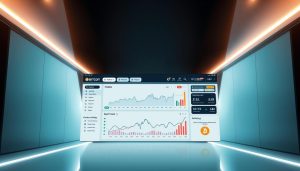
Ecryptobit.com: Unlock the Power of Bitcoin
Did you know that 73% of cryptocurrency platforms fail within their first year? Yet here

Exploring El Salvador’s Bitcoin Adoption: Key Insights
Here’s something that’ll make you do a double-take: only 20% of Salvadorans continue using the

Fintechzoom.com Bitcoin: Your Guide to Cryptocurrency
Over 420 million people worldwide now own cryptocurrency. Yet 67% admit they struggle to find

Bitcoin Dropping: What’s Causing the Cryptocurrency Slump?
Here’s something that should grab your attention: $19 billion in crypto positions vanished in a
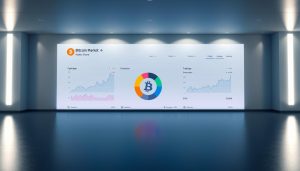
Bitcoin Dominance: Insights into the Cryptocurrency Landscape
Here’s something that might surprise you: back in 2016, Bitcoin controlled roughly 85-90% of the
Share Article
You might also like
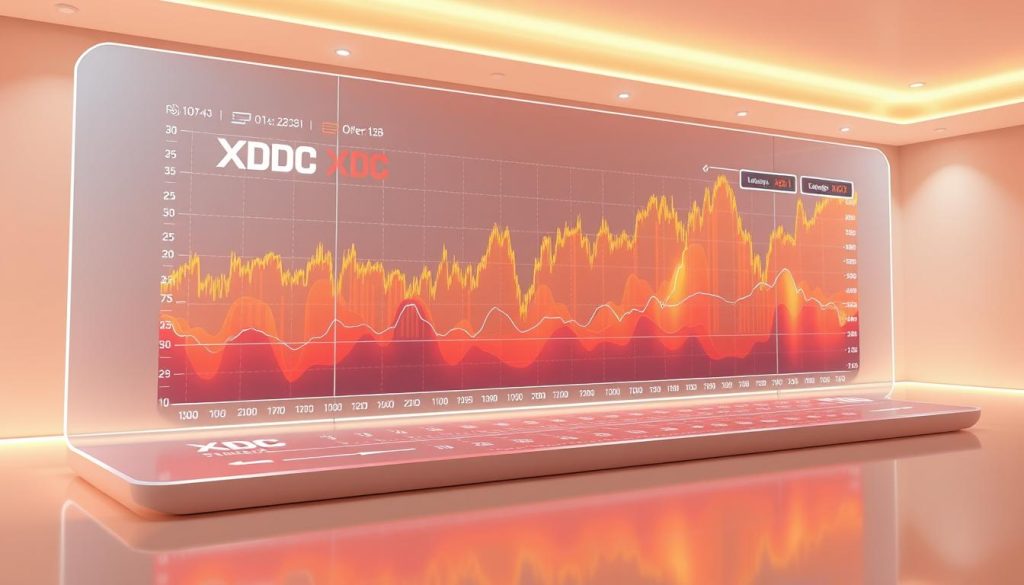
XDC Price Shows Strong Momentum in Crypto Market Today
XDC cryptocurrency is making waves in the digital asset world. Its impressive market performance is catching investors’ eyes. The XDC price shows remarkable strength in
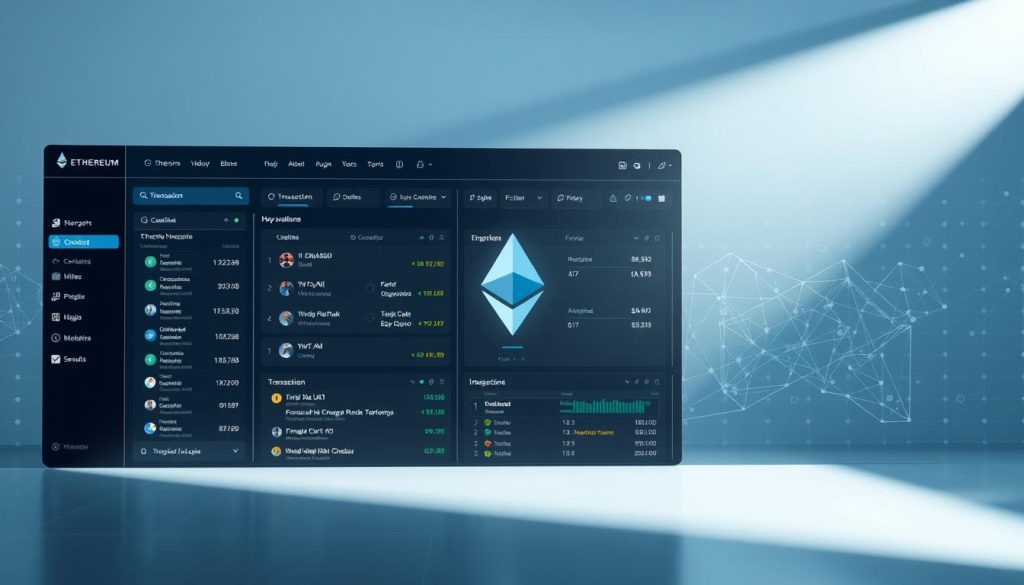
Etherscan: Your Gateway to the Ethereum Blockchain
Tracking over 700,000 active Ethereum addresses is now a breeze with Etherscan. This blockchain explorer has transformed our understanding of digital transactions1. With crypto trading
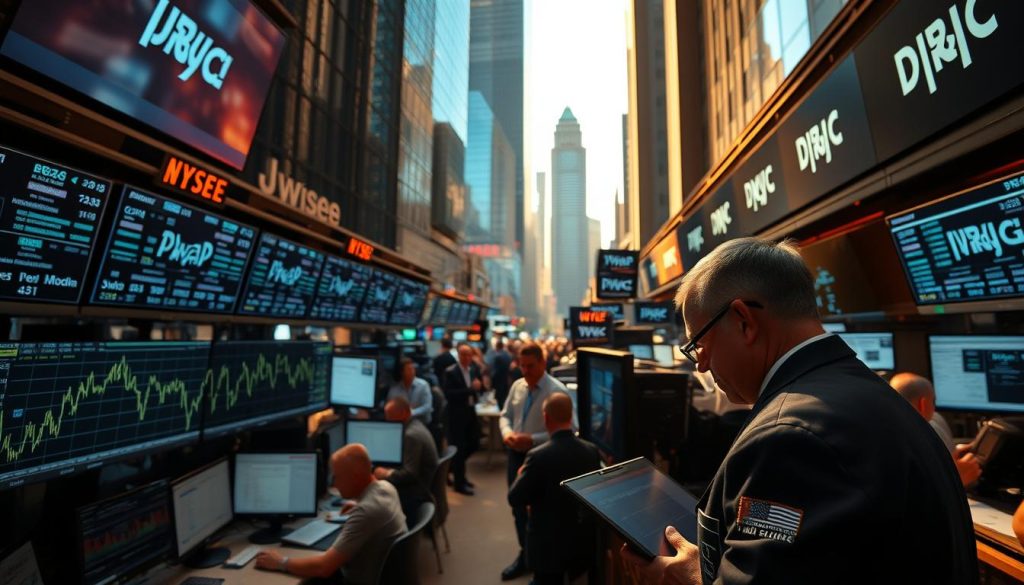
VWAP Trading Strategy Gains Traction on Wall Street
Wall Street is buzzing with a new trading strategy. The Volume Weighted Average Price (VWAP) indicator is changing the game for big investors. This sophisticated
 Bitcoin (BTC) $ 101,769.00
Bitcoin (BTC) $ 101,769.00 Ethereum (ETH) $ 3,378.83
Ethereum (ETH) $ 3,378.83 Tether (USDT) $ 0.999774
Tether (USDT) $ 0.999774 BNB (BNB) $ 986.31
BNB (BNB) $ 986.31 XRP (XRP) $ 2.26
XRP (XRP) $ 2.26Wrapped SOL (SOL) $ 156.31
 USDC (USDC) $ 0.999796
USDC (USDC) $ 0.999796 Lido Staked Ether (STETH) $ 3,374.78
Lido Staked Ether (STETH) $ 3,374.78TRON (TRX) $ 0.289809
 Dogecoin (DOGE) $ 0.172758
Dogecoin (DOGE) $ 0.172758

 Wrapped SOL
Wrapped SOL  TRON
TRON